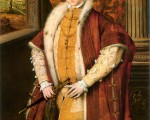
On this day in history events for 6-12 July.
[Read More...]
Between 8 and 9pm on 6th July 1553 King Edward VI lay dying at Greenwich Palace. He prayed:
“Lord God, deliver me out of this miserable and wretched life, and take me among thy chosen: howbeit not my will, but thy will be done. Lord I commit my spirit to thee. O Lord! Thou knowest how happy it were for me to be with thee: yet, for thy chosen’s sake, send me life and health, that I may truly serve thee. O my Lord God, bless thy people, and save thine inheritance! O Lord God save thy chosen people of England! O my Lord God. defend this realm from papistry, and maintain thy true religion; that I and my people may praise thy holy name, for thy Son Jesus Christ’s sake!”
[Read More...]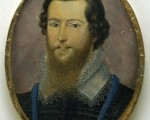
How much do you know about Tudor rebels and rebellions?
Test your knowledge and get those brain cells working with this fun quiz.
[Read More...]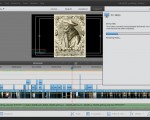
We’re just editing the amazing talk by Dr. Elizabeth Goldring from Warwick University all about the artwork collection of Robert Dudley.
[Read More...]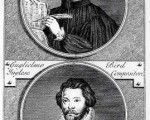
On this day in 1623, Wiliam Byrd, the famous Elizabethan English composer, died at Stondon Massey in Essex and he was buried next to his wife in the parish church there.
[Read More...]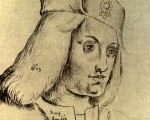
On 3rd July 1495, the pretender Perkin Warbeck landed at Deal in Kent with men and ships. Around 150 of his men were killed and over 160 captured by Henry VII’s troops. Warbeck escaped, fleeing to Ireland. Warbeck claimed to be Richard, Duke of York, the younger of the Princes in the Tower.
[Read More...]
In this week’s Claire Chats I talk about how to go about researching Tudor history. I’m sharing a slideshow and talk I did back in 2013 and I do hope it’s useful to those of you who are new to researching history.
[Read More...]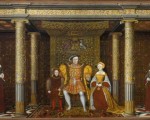
London is sweltering in unaccustomed heat, so if you are in England you might consider a visit to the Queen’s gallery, Buckingham Palace just to get out of the sun.
The exhibition is full of beautiful paintings, china and exquisite Fabergé flowers and importantly for members of The Tudor Society, this painting by the prolific artist, British School.
[Read More...]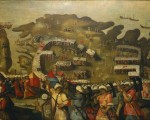
The waters of the bay were littered with floating wooden crosses. To each was nailed the decapitated corpse of a warrior who had died trying to defend the island. This was the gruesome sight which presented itself to Malta’s citizens in the last days of June 1565. After a month-long siege the fortress of St. Elmo had been obliterated by Muslim artillery and its 1,500 surviving inhabitants had been butchered. The incident has a horribly familiar ring to it. We recognise the fanatical nihilism of terrorists who justify their own most inhuman impulses by reference to the creation of a worldwide Islamic state from which everything not in accord with Sharia law would have been purged.
[Read More...]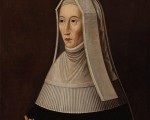
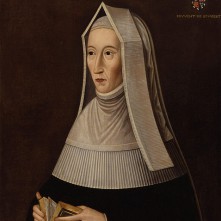
Lady Margaret Beaufort
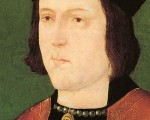
On Sunday 28th June 1461, Edward IV was crowned king at Westminster Abbey. Edward had been declared king after defeating the Lancastrian forces at the Battle of Towton in March 1461. Edward had made his triumphal state entry into London on Friday 26th June, riding from Lambeth to the Tower of London.
[Read More...]
Last week, I explained that the court masque that was part of the entertainments of Epiphany 1512 was a new type of entertainment and that it was the result of the merging of old English traditions with the new Italian fashion. In this week’s video, I talk about this Italian fashion and how it came about.
[Read More...]
This month we have a wide range of articles under the broad theme “Vulnerability”. Tudor Life magazine is packed with articles by well known historians.
[Read More...]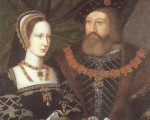
Mary Tudor, Queen of France, and Charles Brandon, Duke of Suffolk.[/caption]Mary Tudor, Queen of France, was the younger sister of King Henry VIII. Born to King Henry VII and Queen Elizabeth of York in 1496, Mary was one of eight children and one of only three to survive to adulthood. Tragedy struck Mary at just seven years of age when her older brother and heir to the throne, Arthur, died in 1502. Less than a year later, Mary’s mother Elizabeth of York died trying to give Henry VII another son. Then, when Mary was eight years old, her older sister Margaret, then fourteen, left England for Scotland to marry King James IV. Mary and her older brother Henry were the only two siblings left in England and it has been suggested that during this time, growing up together, they formed a close bond which survived until Mary’s death.
[Read More...]
The Feast of St John the Baptist was one of the most important feast days of the medieval and Tudor calendar and coincided with Midsummer, the pagan celebration of the summer solstice.
[Read More...]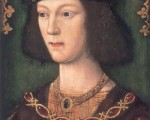
On Saturday 23rd June, Henry VIII and his wife Catherine of Aragon left the Tower of London and made their way through the streets of London to Westminster on their coronation procession.
[Read More...]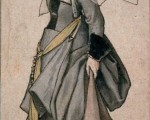
Kyra, Claire, Tim and I are making a final call for submissions to our essay collection “Envisioning the Tudor Woman”. The deadline for entries is 30 June and we’ll be putting together our shortlist soon after, so there’s still time.
[Read More...]
Here’s the transcript from the excellent live-chat session with Gareth Russell on Friday evening. Thanks all those who turned up and congratulations to Bill for winning a copy of “A History of the English Monarchy” by Gareth.
[Read More...]
How much do you know about the residences of Plantagenet and Tudor families? Test your knowledge with this fun quiz.
[Read More...]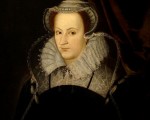
On 20th June 1567, a few days after Scottish rebels apprehended Mary, Queen of Scots, servants of James Douglas, 4th Earl of Morton, allegedly found a silver casket of eight letters, two marriage contracts (which apparently proved that Mary had agreed to marry Bothwell before his divorce) and twelve sonnets. The casket was found in the possession of James Hepburn, 4th Earl of Bothwell and third husband of Mary, Queen of Scots.
[Read More...]
In today’s Claire Chats video I talk about the English court masque and how it developed from a merging of old English traditions and a new Italian fashion.
[Read More...]
Lacey Baldwin Smith has written that “Tudor portraits bear about as much resemblance to their subjects as elephants to prunes.” A slight exaggeration, maybe. But it is true that the historical accuracy of the depictions in Tudor portraits, particularly of royalty, was often at war with “symbolic iconizing”—the use of imagery to represent the person’s character, position or role.
The symbolism could include inscriptions, emblems, mottos, relationships with other people, animals, or objects, and it could also be written into the body itself. A famous example is Hans Holbein’s sketch of Henry VIII—the painting itself was destroyed in a fire—with the king posed to emphasize his power, authority, and resoluteness: legs spread and firmly planted, broad shoulders, one hand on his dagger, and a very visible codpiece (larger, art historians have noted, than portraits of other men at the time.) His stance, as Suzanne Lipscomb points out, “mimics the stance of a man standing in full armour…sparking associations with martial glory.” Lipscomb also points out an interesting detail: in the draft sketch, Henry’s face is turned to a ¾ angle. But in the final painting, as we know from 16th century copies done within Henry’s lifetime, Holbein has Henry looking straight ahead, confronting the spectator with an unblinking stare that is still symbolic of masculinity today.
[Read More...]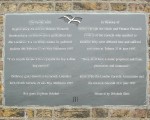
The Battle of Blackheath, also known as the Battle of Deptford Bridge, was the battle which brought the Cornish Rebellion to an end. It was fought on 17th June 1497 and Henry VII’s forces were triumphant against the rebels.
[Read More...]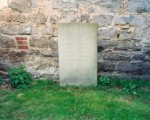
The Battle of Stoke field, which was fought on 16th June 1487, is known as the last battle between the Houses of York and Lancaster in the civil war we call the Wars of the Roses.
[Read More...]
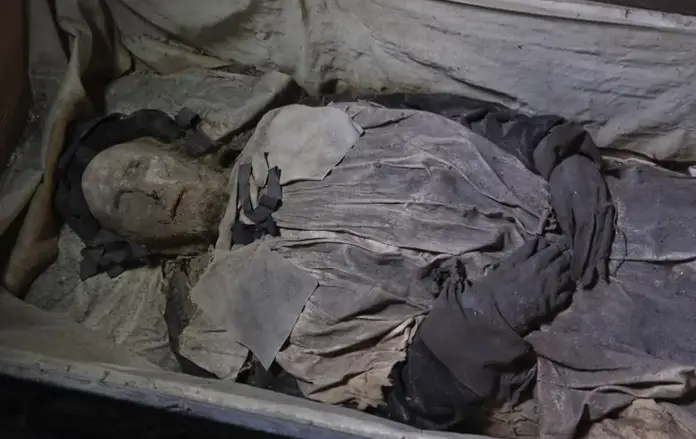 From a press release from Lunds Universitet...
From a press release from Lunds Universitet...
The mummified remains of Peder Winstrup are one of the best-preserved human bodies from the 1600s. Preliminary investigations reveal a sensational find: the internal organs are still in place.
WATCH: Unique mummy undergoes medical investigations:
“We can now observe that Winstrup’s mummy is one of the best-preserved bodies from Europe in the 1600s, with an information potential well in line with that offered by Ötzi the ice man or Egyptian mummies. His remains constitute a unique archive of medical history on the living conditions and health of people living in the 1600s”, says Per Karsten, director of the Historical Museum at Lund University.
Peder Winstrup, a bishop and prominent historical figure in Scandinavia, was one of the founding fathers of Lund University. He died in 1679 and was buried in the famous cathedral in Lund a year later. The coffin, together with its contents, constitutes a unique time capsule from the year 1679 with a well-preserved body, textiles and plant material.
Usually the internal organs would have been removed; in this case, however, the body was not embalmed in a traditional manner but simply dried out naturally. The good condition of the body seems to be the result of several factors in combination: constant air flow, the plant material in the coffin, a long period of illness resulting in the body becoming lean, death and burial during the winter months of December‒January and the general climate and temperature conditions in the cathedral.
In December Peder Winstrup underwent a CT scan at the University hospital in Lund. The preliminary results show that the body is relatively well preserved and it was possible to identify most of the internal organs.
The first results show dried fluid and mucus in the sinuses, indicating that Winstrup had been bedridden for a long period before he died. Calcifications in the lung could indicate both tuberculosis and pneumonia. Plaque was also found in the left coronary artery of the heart, the aorta and the carotid artery, indicating that the bishop suffered from atherosclerosis.
“The gall bladder also has several gallstones, which could indicate a high consumption of fatty food”, says Caroline Ahlström Arcini, an osteologist working on the project.
Peder Winstrup, who lived to the age of 74, also suffered from osteoarthritis in both the knee and hip joints. In addition, he had lost a number of teeth. Traces of caries were found in a couple of the remaining teeth, which would indicate that he had access to sugary foods.
“His right shoulder was slightly higher than his left, due to an injury to a tendon in the shoulder. This would have limited Winstrup’s mobility, making it difficult for him to carry out simple everyday tasks such as putting on a shirt or combing his hair with the comb in his right hand”, says Caroline Ahlström Arcini.
An unexpected discovery that emerged from the CT scan was a four- or five-month old foetus, well hidden in the coffin under Winstrup’s feet. Nobody knows who put the foetus there.
“You can only speculate as to whether it was one of Winstrup’s next of kin, or whether someone else took the opportunity while preparing the coffin. But we hope to be able to clarify any kinship through a DNA test”, says Per Karsten.
The next step will be investigations into the textiles in the coffin, as well as further study of the body. Tissue samples from the internal organs are to be removed, among other things. In addition, the extensive plant material in the coffin will be investigated.
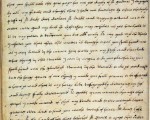
I just wanted to share with you some resources from the National Archives for those of you using primary sources for your research. Reading and interpreting old documents can be a challenge in many different ways, so here are some resources you should find useful.
[Read More...]Just a quick message to say that we've managed to fit Gareth Russell in for a live chat session THIS FRIDAY at 11:30pm UK time (6:30pm Eastern Daylight, 3:30pm Pacific Daylight). He'll be answering your questions on his excellent talk about "The Importance of Christianity".
You can see his talk here:
https://www.tudorsociety.com/expert-talk-gareth-russell-the-importance-of-christianity/
And on Friday we'll be in the Chatroom here:
https://www.tudorsociety.com/chatroom/
I hope to see you there - Gareth is an excellent historian and is incredibly knowledgeable about the Tudor period.
Derek Wilson said that he was "Delighted by Gareth’s talk. What he shared so needs saying."
See you on Friday!
Tim Ridgway & The Tudor Society.